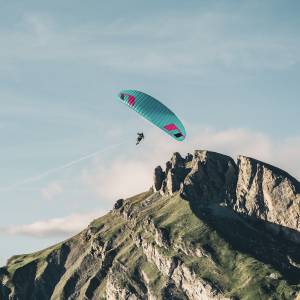Hike & Fly Ultralight and compact, the Kode 2 P is ready to launch and land from any terrain....
3 183,25 €

Hike & Fly Ultralight and compact, the Kode 2 P is ready to launch and land from any terrain....
3 183,25 €
A paraglider approved in category C distinguishes itself from lower categories both by its superior flight performance and by its more precise and efficient piloting.
These EN-C wings, also known as "Sport category" wings, are longer than B and B+ category wings. Add to this a finer, more limited line to keep drag to a minimum, and you get wings with superior accelerated glide, which also transmit information from the air mass much better. This last point is particularly interesting, as it allows you to be proactive in terms of piloting the wing's evolutions, but it also gives you a better feel for thermals. It's not uncommon to feel category C gliders moving towards the thermal on their own as they approach.
The piloting of an EN-C glider also differs from that of a glider in a lower category. The wing is flown with a very short control range, and its responsiveness is superior. You'll enjoy piloting your wing with very little travel and great precision. To turn without degrading flight performance, these wings are designed to be flown from the rear. The Artik 6, for example, is equipped with a control handle between the C and B risers, enabling the glider to be flown with even greater finesse and with as little profile distortion as possible.
All this makes EN-C paragliders particularly effective for cross-country flying.